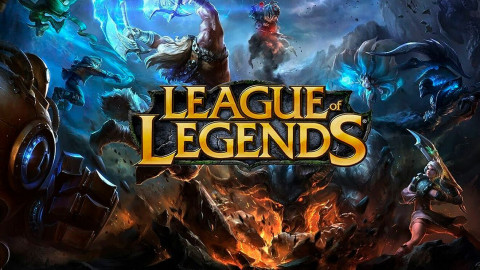
Competition and rivalries are inseparable. A primal instinct originally helping us to survive as groups in the wilderness now has us rally under banners of teams and countries to help something completely different survive: our pride.
And, apart from hooliganism which especially football seems so prone to, I quite like rivalries. They add spice to already exciting games, and even if the game itself isn’t too exciting the emotions around it can make for an enticing experience.
As opposed to traditional sports, esports generally don’t fall for rivalries between countries. Rather, they tend to stick to rivalries between teams (not limited by arbitrary lines on a map) and rivalries based on servers games are played on – memes like “NA Counter Strike” and “Chinese Doto” are spammed in Twitch chat whenever they’re relevant.
The world of Hearthstone esports is friendly, and that good nature trickles down when it comes to rivalries. It’s a bit dull, actually. Aside from the odd heated confrontation at a tournament which results on some Twitter banter afterward, few Hearthstone players have what we’d call a rival. Remarkable at first glance for a 1v1 game but understandable when you realize that the nature of card games prevent consistent face-offs at the top.
As for rivalry between teams: not much is going on there either. The concept of team competition has been explored by third parties a handful of times, and to great success, but ever since the last one we’ve been eagerly waiting for Blizzard’s mysterious team standings to further the team competition plot.
The world of Hearthstone esports is friendly, and that good nature trickles down when it comes to rivalries. It’s a bit dull, actually.
No, the most prevalent rivalry encountered in Hearthstone esports is by far the rivalry between servers. European players make fun of the Americas (though this primarily includes North American players) and vice versa. Then there’s China, who used to host “China vs …” tournaments to prove it could hold its own against the arrogant Westerners. To this day, China remains a mysterious force in competitive Hearthstone, as it quite literally does its own thing with regards to the HCT system. Lastly, there’s Asia-Pacific -- the region that, due to previous neglect by the other regions, has formed smaller communities which flex their muscle only when there’s an event near them.
Although it, unfortunately, isn’t comparable to the rivalries of other esports, whenever a major HCT event happens the competition between servers reaches its peak at the Seasonal Championships. There, all four regions send four players, each fighting for a ticket to the World Championships. It's a big step forward from the earliest editions of HCT, in which each region sent their own representative directly to the World Championships.
The current system allows for more rivalry and a more fair qualifying opportunity for the stronger regions – last Summer Championships three Europeans and one Americas player made it through, while China and Asia-Pacific left empty-handed.
But do the Seasonals offer a truly fair split?
The question stems from the disparity between regions in their respective top 64 point cut-off for HCT Playoffs or, in other words, the method in which each continent selects its four players to send to the Seasonals. Yes, in theory there is a global point threshold: with 45 HCT points you’re guaranteed a spot in the Playoffs. But if there aren’t at least 64 players who make that, it extends below 45 points until there are enough players.
That threshold is fluid and it differs per region. For example: in order to qualify for the HCT Summer Playoffs European players had to accumulate 32 HCT points, Asia-Pacific players 28 points and Americas 21 points. That’s a pretty big gap and it reeks of inequity.
It is, therefore, no surprise that players (mainly European) have asked for a lower global point cut-off, and perhaps even a global Seasonal Playoffs in which sixteen players could qualify for the Seasonal Championships.
What would the numbers look like for such a lower global point cut-off, and a global Seasonal Playoffs? Let’s take a look at the HCT Summer Standings for an indication. As China has its own point system, it is left out for now.

With a global Playoff system, the amount of entrants allowed has to be increased as well. 192 slots are available for players from the three regions. With an HCT point cut-off at 25, 205 players would make it into the hypothetical global Summer Playoffs.
What stands out, however, is the amount of players that would make it from each region. At 25 HCT points, Europe and Asia-Pacific each have more than 80 players, and make up 43.4% and 40% of the field respectively. The Americas, on the other hand, fall short massively, and would only get to send 34 players to fight for a ticket to the Seasonal Championships – they’d make up for only 16.6% of the field.
Interestingly enough, similar data appears if the HCT Fall playoffs were to be held right now, 3.5 months into the 4 month long Season 2. The top 64 point cut-off per region would be almost exactly the same – only Asia-Pacific players would have it slightly easier. The global point cut-off would again be at 25 points, which this time around 202 players would reach.
Europe takes the lead once more; this time around over half of the players at the theoretical global Fall Playoffs would be European. Asia-Pacific would send 66 players, around a ‘fair’ one-third, and the Americas would once again trail behind with a sixth of the players.

Upon seeing these numbers, it can be easy to reach the conclusion that global Playoffs should be implemented as soon as possible. And yes, my European heart too tells me that grave injustice is being inflicted upon my oh-so-dear region. But it’s not that black and white at all.
It’s a hot grey mess.
Firstly, there are the massive logistical issues such a concept would bring with them. How in heaven’s name are you going to run a 192 player Swiss? And even if you can split them up into three pools, spreading regions equally, there is still the time difference that gets in the way: it is impossible to find a time that suits all regions.
The exact point at which the global threshold should be set at is difficult to determine.
And it’s not just logistics that get in the way. A far more philosophical question lies in its core too: is making the playing field equal truly fair? Because yes, the Americas are quite clearly behind the other two regions when it comes to the amount of players that are able to compete on the highest level. But their Latin-American part has barely received any attention from the start of competitive Hearthstone and only now, when their previously ‘local’ tournaments have been turned into official Tours Stops, the region is coming more out of its shell. Punishing them right as they’re recovering from a support deficit doesn’t feel quite right either.
So perhaps holding global Seasonal Playoffs is too enthusiastic, and a smaller adjustment could suffice for now too. The global point cut-off which now rests at 45 HCT points could be lowered to give more players certainty. For example: a rough extrapolation of the data suggests that a 40 point threshold for Europe would provide the necessary 64 players. But that would mean that in other regions the players are still drifting in uncertainty, as they most likely won’t make that exact cut-off. Should we then want an “iron fist” ruling, that instead of a threshold sets a minimum amount of points required to make it to the Playoffs?
The exact point at which the global threshold should be set at is difficult to determine. If it’s too high, the top 64’s have to be completed by players who aren’t sure if the amount of points they gathered was enough. If the threshold is too low, it could be possible that too many players qualify. What is certain, though, is that a couple of tweaks need to be made to make qualification more fair and less uncertain for players, while keeping the little rivalry there is intact.
-

Storyteller by heart. If something is competitive, I am interested in it.
Sort by:
Comments :0





